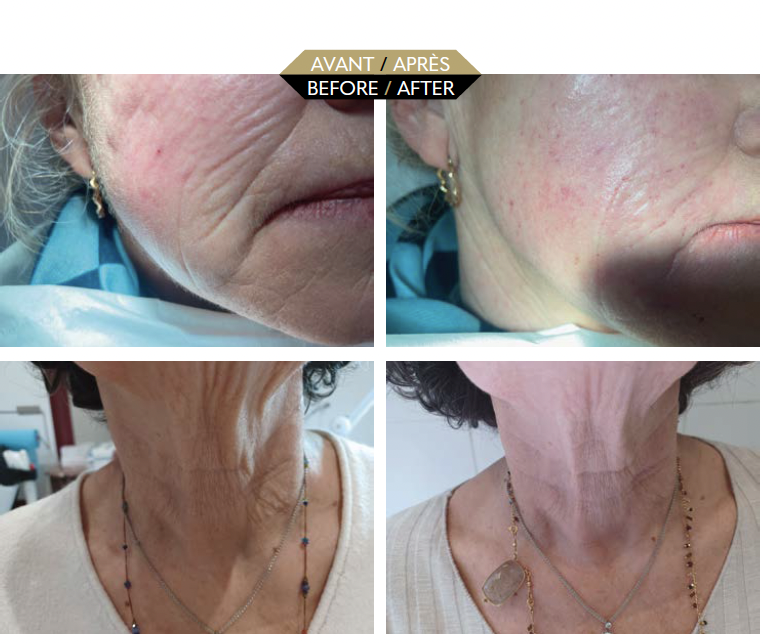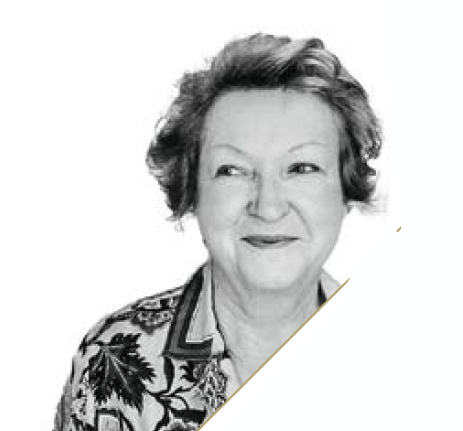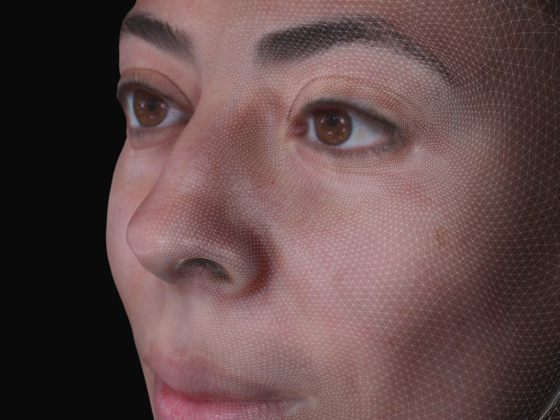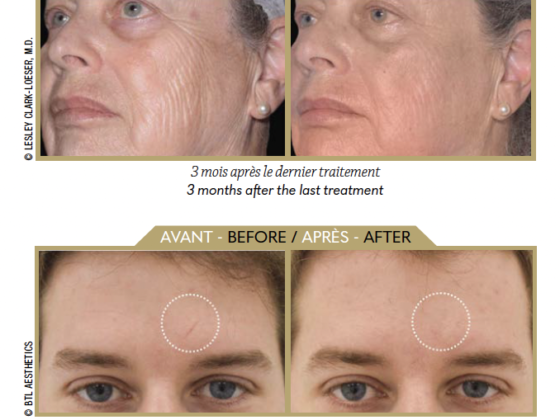Dr Catherine de Goursac
A comprehensive, efficient treatment at all levels
“Radiofrequency microneedling (RFM) and high-intensity focused ultrasounds (HIFU) are joining forces to give optimal results at all levels: epidermis, dermis, SMAS and hypodermis.”
The revolution is to be able to treat both the skin density – and therefore smooth out “crumpled” skin – with radiofrequency microneedling (RFM) and tighten up the tissues with focused ultrasounds (HIFU). It is the combination of these two treatments – currently the most effective treatments available for treating skin aging – in one single machine, the FOCUS DUAL, that allows us to optimise treatment plans for sagging skin.
The skin’s deep layers
In order to better understand what we are doing and where, we need to know about the areas of skin we are targeting.
•Epidermis: around 0.05 to 1.5mm thickness
•Dermis: 2mm to 4mm
•SMAS (superficial muscular aponeurotic system): 4mm to 5mm
•Hypodermis (fat): 6mm and deeper
In order to treat the devitalisation of the dermis, we must target a depth of 2 to 4mm, which is what radiofrequency microneedling can do. To cause the skin to retract, we need to treat the SMAS, at a depth of 4 to 6mm, with HIFU, which can reach down to 13mm in depth during a body shaping session. For the last decade or so, I have used the FOCUS DUAL, which is made in Korea and distributed by Endromed. It combines these two techniques in the same machine. Since it was first introduced in 2017, there have been four generations of machine, and it has proven very popular in Germany and Great Britain. Radiofrequency microneedling first appeared in 2009 and all of its machines have since undergone considerable improvements.
How does it work?
It is a type of microneedling, where fine needles penetrate the skin and cause micro-perforations in order to create a cascade effect that stimulates collagen synthesis, in particular. This radiofrequency (which is emitted through the needles) bio-stimulates the devitalised elements of the dermis and epidermis using an electromagnetic wave current, which generates heat and leads to the immediate contraction of the existing collagen fibres and stimulates the fibroblasts, which synthesise new collagen. Treatment personalisation: This involves treating the skin with tips that transmit radiofrequency and have a variable number of needles (between 10 and 36), which may be insulated (the radiofrequency is concentrated on the distal part of the needle) or not (meaning we can treat along the whole length of the needle), which are applied to the skin at variable depths from 0.5mm to 3.5mm, with a 4.5mm extension to deviate the temperature. We work on the whole dermis in the same way.
It is THE technique that best densifies the skin and therefore smooths it out.

HIFU or High Intensity Focused Ultrasounds: This technique made its appearance in the aesthetics field in 2007. The application of electroacoustic waves that come together at a single point at the chosen depth and with a pre-determined intensity allows for a kind of electrocoagulation of the tissues. HIFU are particularly useful for retracting the deep layers of the skin and the SMAS muscle (superficial muscular aponeurotic system). They can also, where necessary, destroy the adipocytes and slim down certain areas. The handpieces allow us to treat from 1.5mm to 13mm, with the handpieces that go deepest targeting the body fat, such as a fat and sagging abdomen or bingo wings on the arms coupled with excess fat and distended skin. We can personalise the combination of these two treatments with the choice of multiple settings according to each patient.
INDICATIONS
The right indications are any areas where the skin is devitalised, too thin and lacks elasticity. Face: the eye contour, fine lines on the cheeks, barcode lines on the upper lip, etc. It can also be used for a crumpled appearance on the neck, décolleté, and around the belly button. Finally, we can achieve a discreet improvement in creases on the inner arms and inner thighs, and the area above the knees (I achieve the best results on these areas with ATTIVA subdermal radiofrequency). We can also successfully treat crater-like acne scars, stretch marks, and skin whose t-zone has constantly dilated pores that look like micro-scars.
RESULTS
Both of these treatments offer immediate results, with plumper, tightened skin. But the best result is achieved over the long term, as the fibroblast stimulation – which synthesises collagen, hyaluronic acid and elastin fibres – occurs after 3 months and is optimal after 6 months. The same goes for the adipocytes – the fat cells – which self-destruct in the months following treatment. At the end of the session, the skin looks beautiful and boosted, but it will take 3 to 6 months for the skin to become truly denser.
WHAT HAPPENS DURING A SESSION?
An anaesthetic cream is applied to the area prior to treatment, then we set the parameters of the RFM. One passage of the device is sufficient per zone. The HIFU are applied just after the RFM.
PROTOCOL
One session is scheduled every 15 days for 2 to 3 months, depending on the extent of the skin’s devitalisation. There are no phototype-related issues for either technique: RFM or HIFU. UV exposure is a counterindication for RFM, but this is not the case for HIFU.
AFTER EFFECTS
When RFM is carried out on its own, there may either be some slight redness that lasts a few hours or some small blisters that disappear after 48 hours, depending on the type of needle used and the depth. When HIFU is carried out on its own, the after effects are just a bit of redness that can last from a few minutes to a few hours, at most.
Dr Catherine de Goursac

Expert in medical aesthetics techniques for 30 years. Teacher at the faculty of medicine since 2017, board member of the AFME (French Association of Aesthetic Medicine) and the FSMEA (Union of Aesthetic and Anti-aging Doctors). Permanent member of the French Society of Aesthetic Medicine.
More informations: esthetiquemedicale.com















